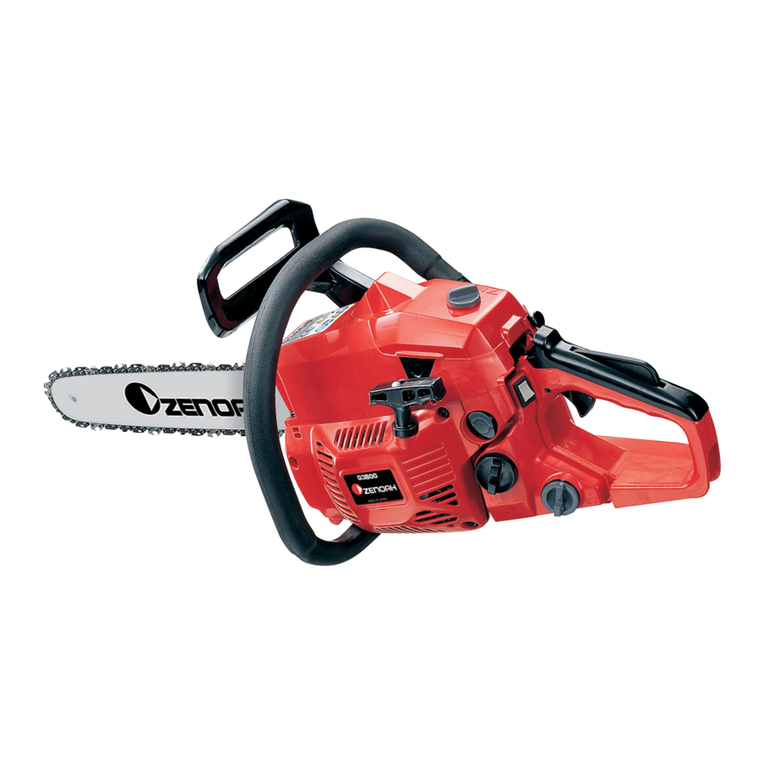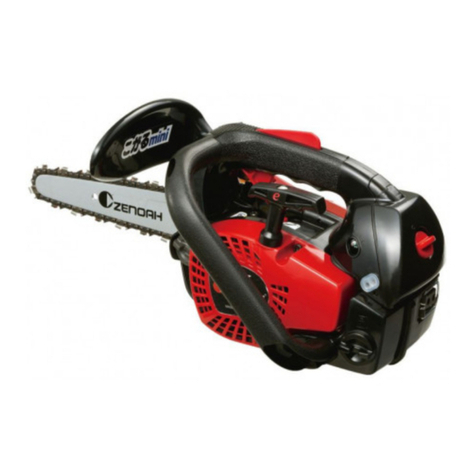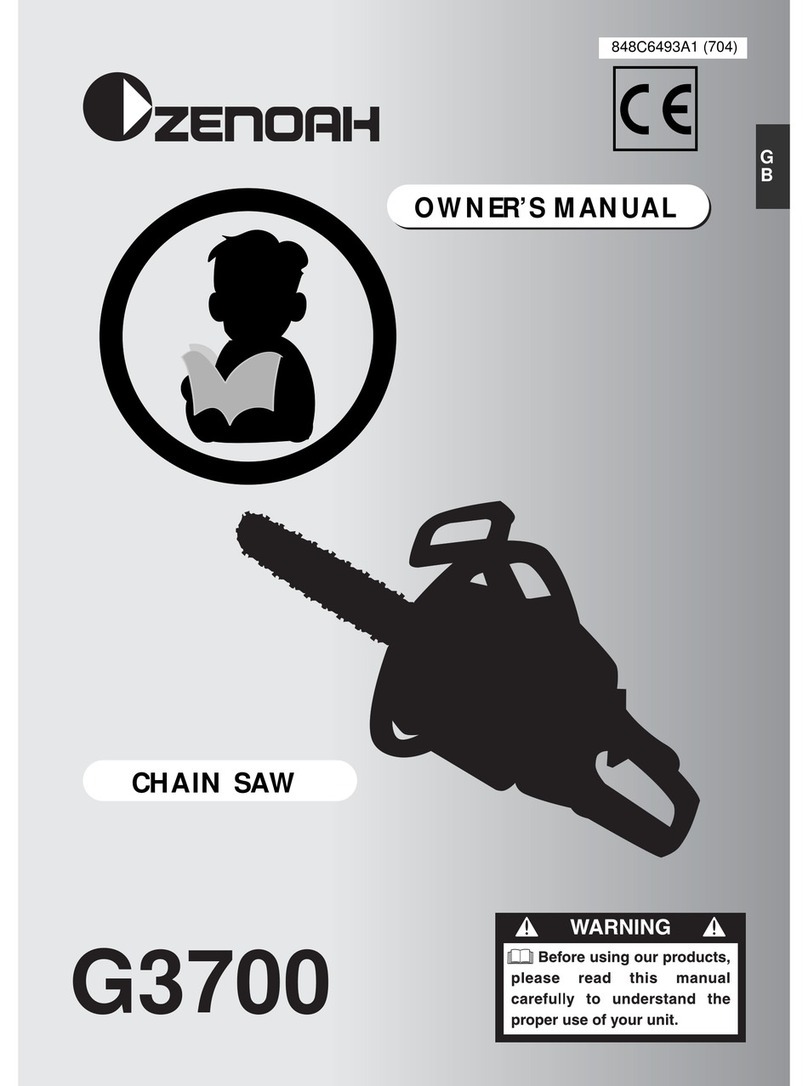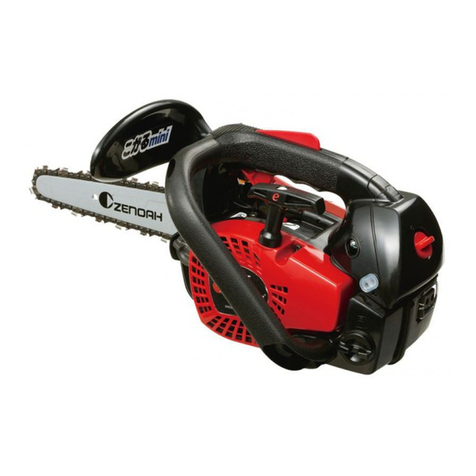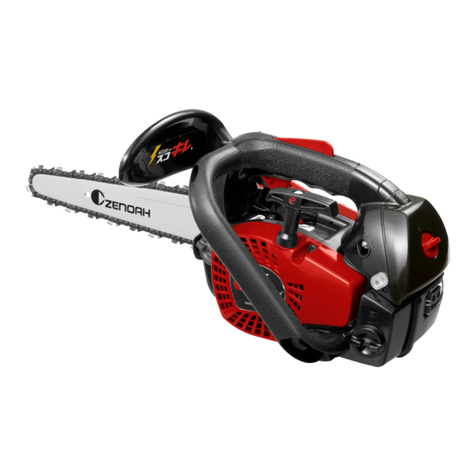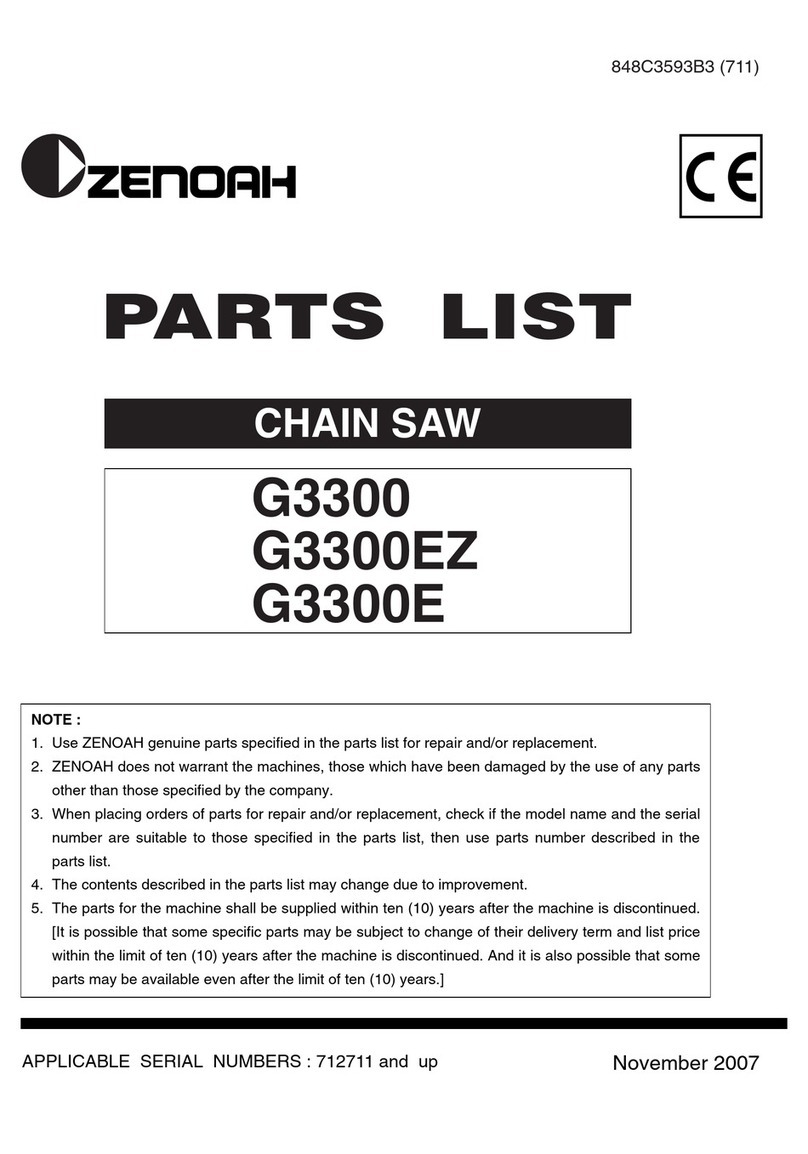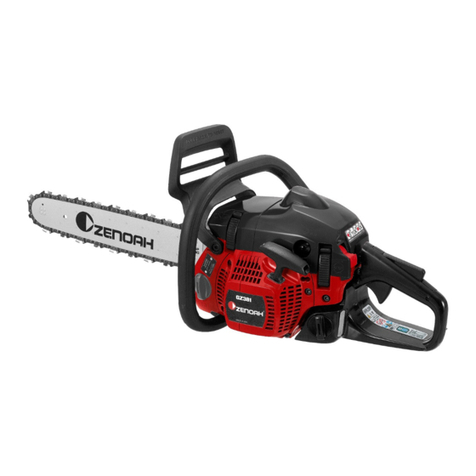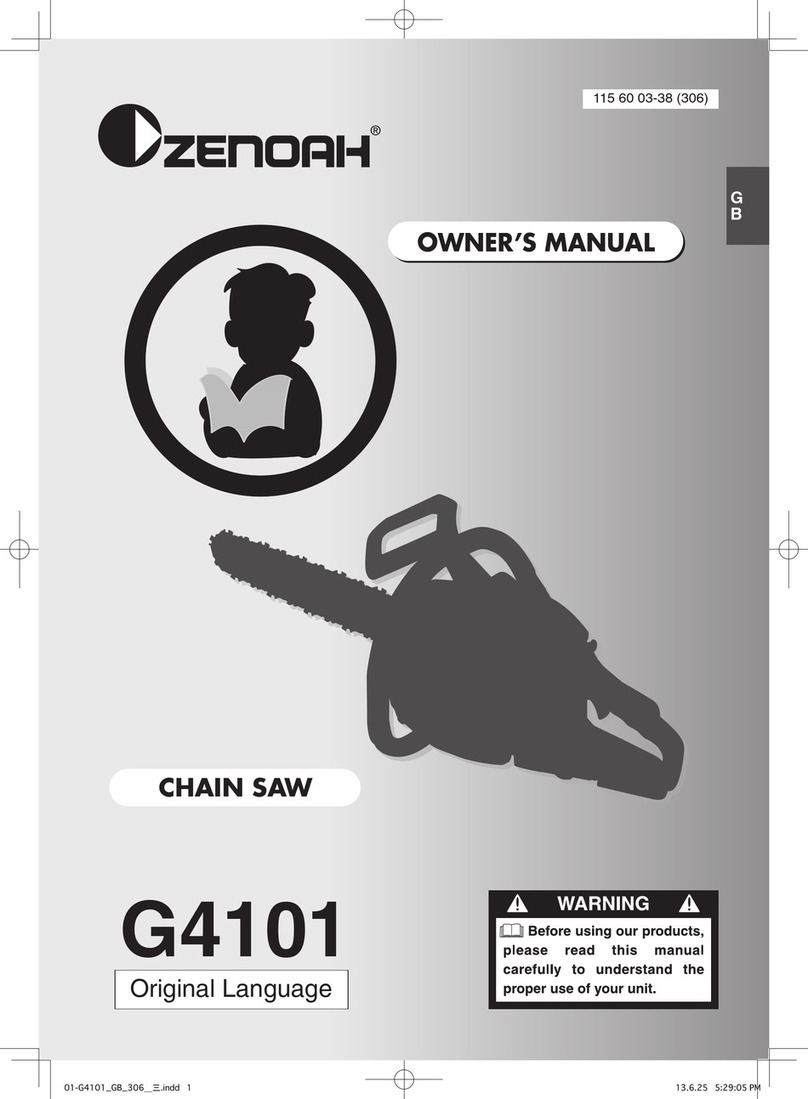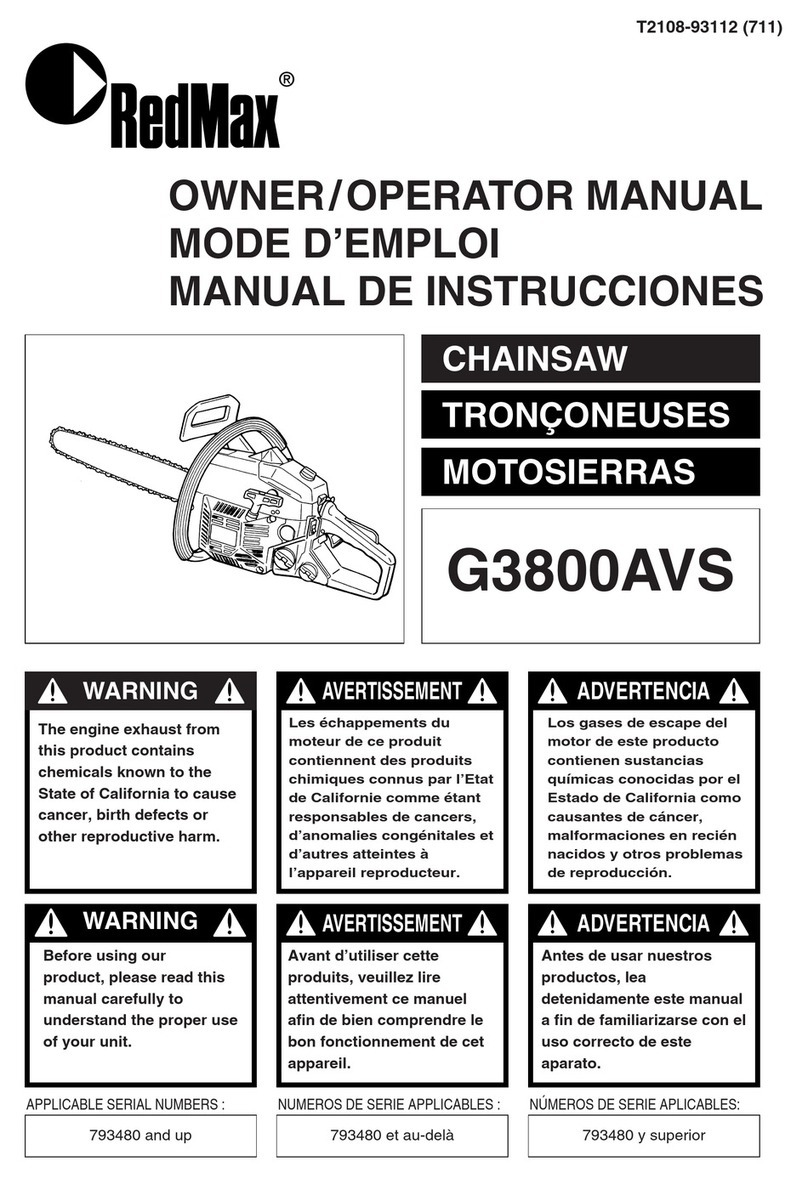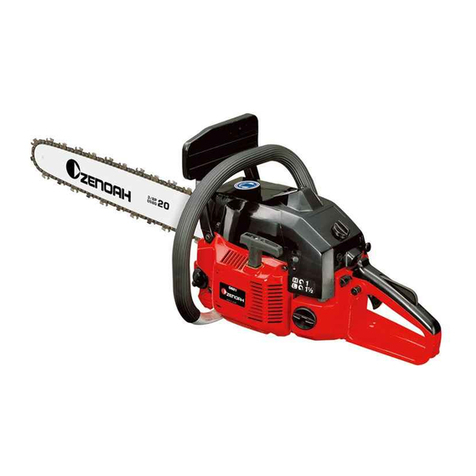
GZ400
GB-10
Fine adjustment of the idling speed T
Adjust the idle speed with the T-screw. If it is necessary to
readjust, turn the T-screw clockwise while the engine is run-
ning, until the chain starts to rotate. Then turn counter-clock-
wise until the chain stops. A correctly adjusted idle speed set-
ting occurs when the engine runs smoothly in every position. It
should also be good margin to the rpm when the chain starts
to rotate.
Contact your servicing dealer, if the idle speed set-
ting cannot be adjusted so that the chain stops.
Do not use the chain saw until it has been properly
adjusted or repaired.
■ CHAIN BRAKE
This machine is equipped with an automatic brake to stop saw
chain rotation upon occurrence of kickback during saw cut-
ting. The brake is automatically operated by inertial force, which
acts on the weight fitted inside the front guard.
This brake can also be operated manually with the front guard
turned down to the guide bar.
To release the brake, pull up the front guard toward the front
handle till a “click” sound is heard.
[Caution]
Be sure to confirm brake operation during daily inspection.
How to confirm:
1) Turn off the engine.
2) Holding the chain saw horizontally, release your hand from
the front handle, hit the tip of the guide bar to a stump or a
piece of wood, and confirm brake operation. Operating
level varies by bar size.
In case the brake is not effective, ask our dealer for inspection
and repairs.
If the engine keeps rotating at high speed with the brake en-
gaged, the clutch will overheat causing trouble.
When the brake engages during operation, immediately re-
lease the throttle lever to stop the engine.
■ STOPPING THE ENGINE
1. Release the throttle lever to allow the engine to idle for a
few minutes.
2. Set the switch to the “O” (STOP) position.
[Important]
Do not put the chain saw on the ground when the chain is still moving.
For additional safety, set the chain brake when the saw is not in use.
In the event that the ignition switch will not stop the saw, pull
the choke knob out to the fully extended position "FULL
CHOKE" and engage chain brake to stop the engine. If the
ignition switch will not stop the saw when set to the "STOP"
position, have the ignition switch repaired before using the chain
saw again to prevent unsafe conditions or serious injury.
Note: When you are finished using the saw, always re lieve tank pressure
by loosening, then retightening, the chain oil and fuel mix caps. Allow
the engine to cool before storing.
Carburetor anti-freeze mechanism
Operating chain saws in temperatures of 0 – 5°C at times of high
humidity may result in ice forming within the carburetor, and this in
turn may cause the output power of the engine to be reduced or for
the engine to fail to operate smoothly.
This product has accordingly been designed with a ventilation hatch on
the right side of the surface of the cylinder cover to allow warm air to be
supplied to the engine and to thereby prevent icing from occurring.
Under normal circumstances the product should be used in the nor-
mal operating mode, i.e., in the mode to which it is set at the time of
shipment. However when the possibility exists that icing may occur,
the unit should be set to operate in the anti-freeze mode before use.
Continuing to use the product in the anti-freeze
mode even when temperatures have risen and re-
turned to normal, may result in the engine failing to
start properly or in the engine failing to operate at
its normal speed, and for this reason you should
always be sure to return the unit to the normal oper-
ating mode if there is no danger of icing occurring.
■ HOW TO SWITCH BETWEEN OPERATING MODES
1. Flip the engine switch to turn off the engine.
2. Remove the cover to the air filter, remove the air filter, and
then remove the choke knob from the cylinder cover.
3. Loosen the screws holding the cylinder cover in place (i.e.,
the three screws on the inside and the one screw on the
outside of the cover), and then remove the cylinder cover.
4.
Press with your finger down on the icing cap located on the
right-hand side of the cylinder cover to remove the icing cap.
5.
Adjust the icing cap so that the “snow” mark faces upwards
and then return it to its original position in the cylinder cover.
6. Fix the cylinder cover back into its original position, and
then fix all other parts back into their proper positions.
Switch
Choke knob
Cylinder cover
Icing cap
T-screw
Normal operating mode Anti-freeze mode
Cylinder cover
“Sunshine” mark “Snow” mark
